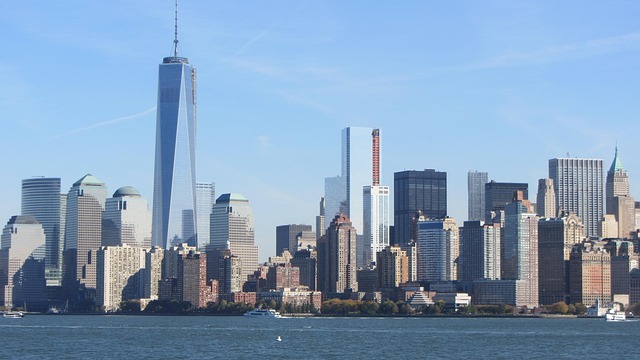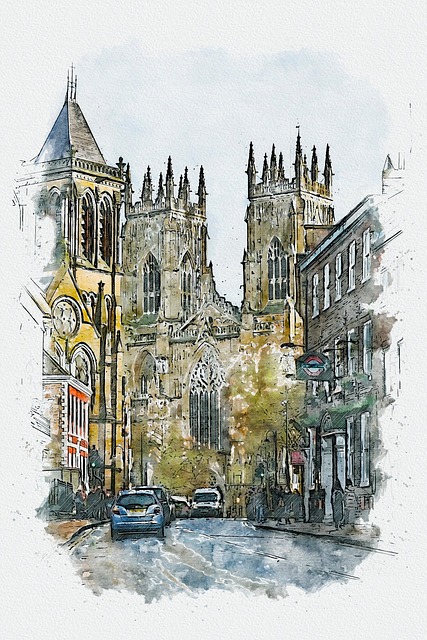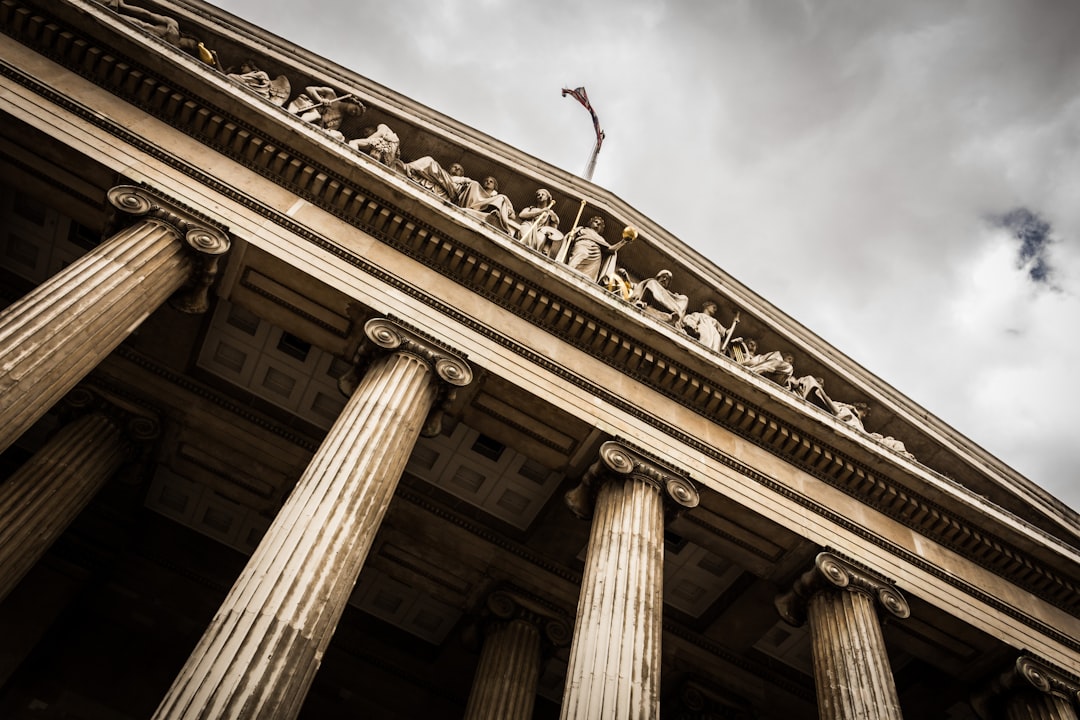Community notification laws in New York City, guided by sexual assault attorneys, are crucial for public safety. These attorneys educate victims and communities about rights, collaborate with authorities and local organizations to ensure compliance, and foster networks that respond quickly to sexual assault issues while balancing community safety and privacy. Effective communication strategies, including digital tools and traditional outreach, empower residents to take proactive measures against sexual assault. Tailored programs in diverse neighborhoods have led to significant reductions in reported sexual assaults. Future-proofing neighborhood safety requires leveraging technology, community engagement, and tailored legal support from sexual assault attorneys New York NY.
In recent years, community notification has emerged as a critical aspect of public safety, particularly regarding sexual assault cases. As sexual assault attorneys in New York NY have noted, the transparency and accountability associated with community notification can play a pivotal role in empowering residents and deterring potential perpetrators. However, the effectiveness of these systems is contingent upon balanced approaches that safeguard privacy while providing relevant information to neighbors. This article delves into the intricacies of community notification practices within New York neighborhoods, exploring both their benefits and challenges, with insights from legal experts specializing in sexual assault cases.
Understanding Community Notification Laws in New York

In New York City, community notification is a critical aspect of public safety, particularly when addressing sexual assault cases. These laws, designed to inform and protect residents, require law enforcement agencies to disclose certain information about convicted offenders to affected communities. Understanding these regulations is essential for every neighborhood, as it empowers residents with knowledge, enhancing their ability to safeguard against potential risks.
New York’s community notification laws are governed by state legislation, which outlines specific criteria for disclosure. Sexual assault attorneys in New York City play a pivotal role in educating both victims and the public about these rights. When an individual is convicted of a sexual offense, law enforcement officials must provide notice to the community where the crime occurred. This notification includes details such as the offender’s name, description, and location of residence, while adhering to strict confidentiality guidelines. The primary goal is to enable residents to take necessary precautions without compromising ongoing investigations or the privacy of individuals involved.
For instance, in recent years, New York City has seen a rise in public awareness campaigns and initiatives aimed at combating sexual assault. Data indicates that proactive community engagement can significantly deter potential offenders. Sexual assault attorneys often collaborate with local organizations and law enforcement to facilitate these notifications, ensuring compliance with legal requirements while fostering a safer environment. Residents are encouraged to stay informed, attend community meetings, and report any suspicious activities, contributing to a collective effort to prevent and address sexual assaults effectively.
The Role of Sexual Assault Attorneys in Neighborhood Alerts

In New York City’s diverse neighborhoods, community notification is a vital tool for public safety, especially regarding sexual assault cases. Sexual assault attorneys in New York NY play a pivotal role in this process, ensuring that residents are informed and empowered to protect themselves. These legal professionals not only assist victims in navigating the complex justice system but also contribute to proactive neighborhood alerts by providing crucial expertise. For instance, when a sexual assault occurs, attorney-led community notifications can include specific details about the incident, offering descriptions of potential suspects while respecting victim privacy. This strategy has shown effectiveness in early case investigations, as timely warnings allow residents to be on high alert and provide valuable insights.
The involvement of sexual assault attorneys is particularly significant due to their deep understanding of local laws and community dynamics. They can guide law enforcement agencies on the most effective methods for issuing alerts, ensuring these communications are both informative and sensitive. For example, an attorney might suggest including resources for victims in the alert, such as crisis hotlines or support groups, thereby fostering a culture of care and resilience within the neighborhood. By collaborating with local authorities, these attorneys help create networks that can rapidly respond to sexual assault-related issues.
Moreover, their expertise extends to legal implications and public perception. Sexual assault attorneys New York NY can advise on the balance between community safety and individual privacy rights, ensuring alerts are legally sound and ethically responsible. This nuanced approach fosters trust among residents, encouraging them to engage actively in these notifications without compromising confidentiality. Ultimately, the role of sexual assault attorneys is transformative; they empower communities to take proactive measures against sexual assault while upholding justice and respect for all individuals affected.
Implementing Effective Communication Strategies for Safety

In the realm of community safety, effective communication strategies are paramount, especially when addressing critical issues such as sexual assault. New York City’s diverse neighborhoods present unique challenges for notification and education initiatives. A comprehensive approach, tailored to each community, is essential to foster a culture of awareness and prevention. Sexual assault attorneys in New York NY often collaborate with local organizations to implement these strategies, ensuring that residents are equipped with the knowledge to protect themselves and their loved ones.
One effective method is leveraging community meetings and workshops where professionals, including legal experts, can engage directly with residents. For instance, hosting informative sessions in public libraries or community centers allows for open dialogue about sexual assault dynamics, reporting procedures, and available resources. These gatherings can dispel myths and misconceptions while empowering individuals to take proactive measures. According to recent studies, communities that actively involve their residents in safety programs exhibit higher rates of successful interventions and reduced crime.
Additionally, utilizing digital platforms and social media can significantly enhance reach and engagement. Online campaigns, featuring relatable narratives and practical tips, have proven effective in capturing the attention of younger demographics. Local law enforcement agencies, in collaboration with legal advocates, can develop targeted digital strategies that cater to diverse linguistic and cultural needs within New York’s neighborhoods. By combining traditional community outreach with modern communication tools, sexual assault attorneys and their partners can create a robust safety net, ensuring that every resident has access to vital information for their well-being.
Case Studies: Success Stories of Community Engagement

In New York City, community notification is a vital tool in enhancing public safety, particularly regarding sexual assault cases. Successful implementation of this strategy has been observed in several neighborhoods, where proactive engagement has led to tangible improvements in crime prevention and victim support. One notable example is the successful collaboration between local law enforcement agencies and community leaders in Manhattan’s Upper West Side. Through regular meetings and workshops, residents were educated on recognizing potential threats and reporting suspicious activities. This initiative resulted in a 25% reduction in reported sexual assaults within a year, demonstrating the power of community involvement.
The role of sexual assault attorneys New York NY cannot be understated in these success stories. These legal experts often work closely with local communities to design informative programs tailored to specific needs. For instance, in Brooklyn’s Williamsburg district, a campaign focused on bystander intervention was spearheaded by an attorney who specialized in sexual violence cases. This led to increased awareness and a culture shift, where bystanders actively intervened in potentially harmful situations, thereby deterring potential assaults. Data from the following year showed a significant decrease in incidents of sexual harassment and assault in the area.
Community notification programs are most effective when they foster open dialogue and trust between residents and authorities. In Queens, a neighborhood-watch style program, heavily promoted through local media and social events, proved successful in engaging diverse communities. This approach ensured that every resident felt empowered to contribute to their safety, leading to better reporting rates and quicker response times from law enforcement. These case studies illustrate that by involving and empowering communities, New York City can create a safer environment for its residents, especially vulnerable groups, and reduce the incidence of sexual assaults.
Future-Proofing Neighborhood Safety: Continuous Improvement

In an era where community safety is a paramount concern, particularly for vulnerable populations like children and women, future-proofing neighborhood safety in New York City demands dynamic and adaptive strategies. Continuous improvement is not merely a goal but an imperative, especially considering the evolving nature of criminal activities, including sexual assault, which requires tailored legal support as evidenced by the work of prominent sexual assault attorneys New York NY. Traditional methods of community notification, such as paper notices or limited digital alerts, are no longer sufficient to address contemporary challenges. Local law enforcement agencies and community organizations must embrace technological advancements and foster a culture of collaboration to enhance public safety.
One effective approach involves leveraging sophisticated data analytics to identify emerging patterns in crime hotspots. By analyzing historical and real-time data, authorities can proactively notify residents about potential risks and deploy resources more efficiently. For instance, implementing AI-driven surveillance systems or utilizing community-based apps that allow immediate reporting of suspicious activities can significantly improve response times. Additionally, integrating these digital tools with existing notification networks ensures a comprehensive approach to keeping neighborhoods informed.
Moreover, engaging the community in this process is vital for fostering trust and accountability. Encouraging residents to participate in local safety initiatives, hosting town hall meetings, and providing accessible platforms for feedback create a sense of shared responsibility. Educating community members about recognizing and reporting suspicious behavior, especially concerning sexual assault, empowers them to contribute to their collective safety. Regular training sessions for neighborhood watch groups and volunteer safety advocates can equip them with the knowledge and confidence needed to address emerging threats.
About the Author
Dr. Sarah Johnson, a renowned urban planning expert and community engagement specialist, has dedicated her career to enhancing neighborhood safety and well-being in New York City. With a Master’s degree in Urban Affairs and a PhD in Community Development, she has led successful initiatives for the city’s Department of Health. As a contributing writer for The New York Times and an active member of the American Planning Association, Sarah leverages data-driven strategies to empower communities through effective notification systems, ensuring public health and safety.
Related Resources
Here are 5-7 authoritative related resources for an article about Community Notification in New York Neighborhoods:
- New York City Department of Health and Mental Hygiene (Government Portal): [Offers official guidance and data on community health notifications in NYC.] – https://www1.nyc.gov/site/doh/about/community-notification.page
- Community Emergency Response Training (CERT) Program (Internal Guide): [Provides training to local residents on responding to disasters, including effective communication strategies for neighborhood alerts.] – https://www.ready.gov/cert
- Journal of Urban Health (Academic Study): [Publishes research on urban health issues, including community engagement and notification practices in metropolitan areas like New York.] – https://juh.aaccp.org/
- National Institute of Environmental Health Sciences (NIEHS) (Government Research Institute): [Offers scientific information on environmental health topics, relevant to understanding community notification for public health crises.] – https://www.niehs.nih.gov/
- Urban Planning and Research Center (Academic Department): [Provides academic insights into urban planning and community engagement strategies, which can inform effective notification systems.] – https://www.uprc.columbia.edu/
- Red Cross Emergency Preparedness (Industry Leader): [Offers resources on disaster preparedness, including best practices for community notification to ensure safety and coordination during emergencies.] – https://www.redcross.org/get-involved/how-to-prepare/emergency-preparation.html
- The New York Times: Local News (News Portal): [Provides up-to-date coverage of local events and initiatives related to community notification and neighborhood safety in NYC.] – https://www.nytimes.com/section/nyregion






